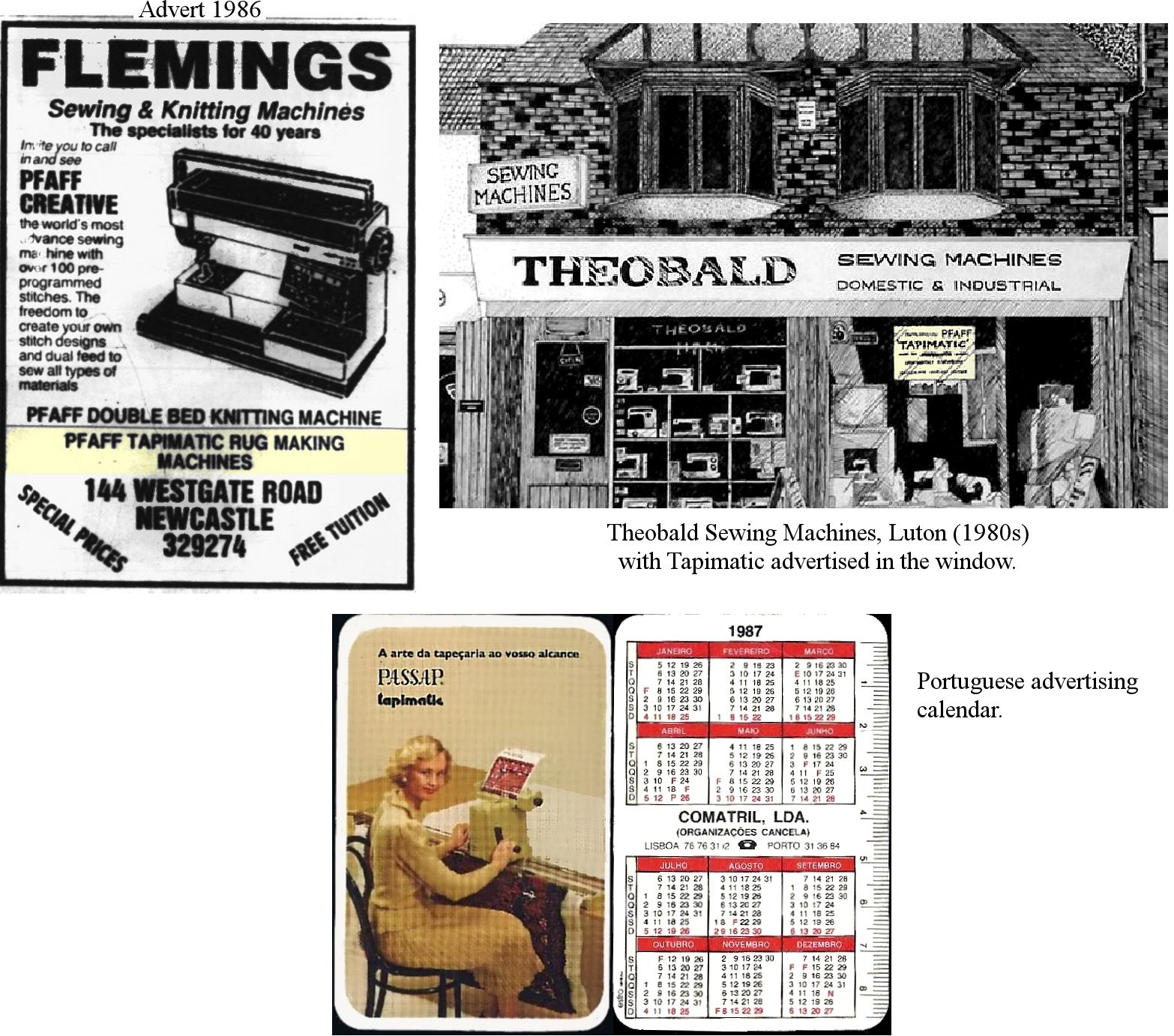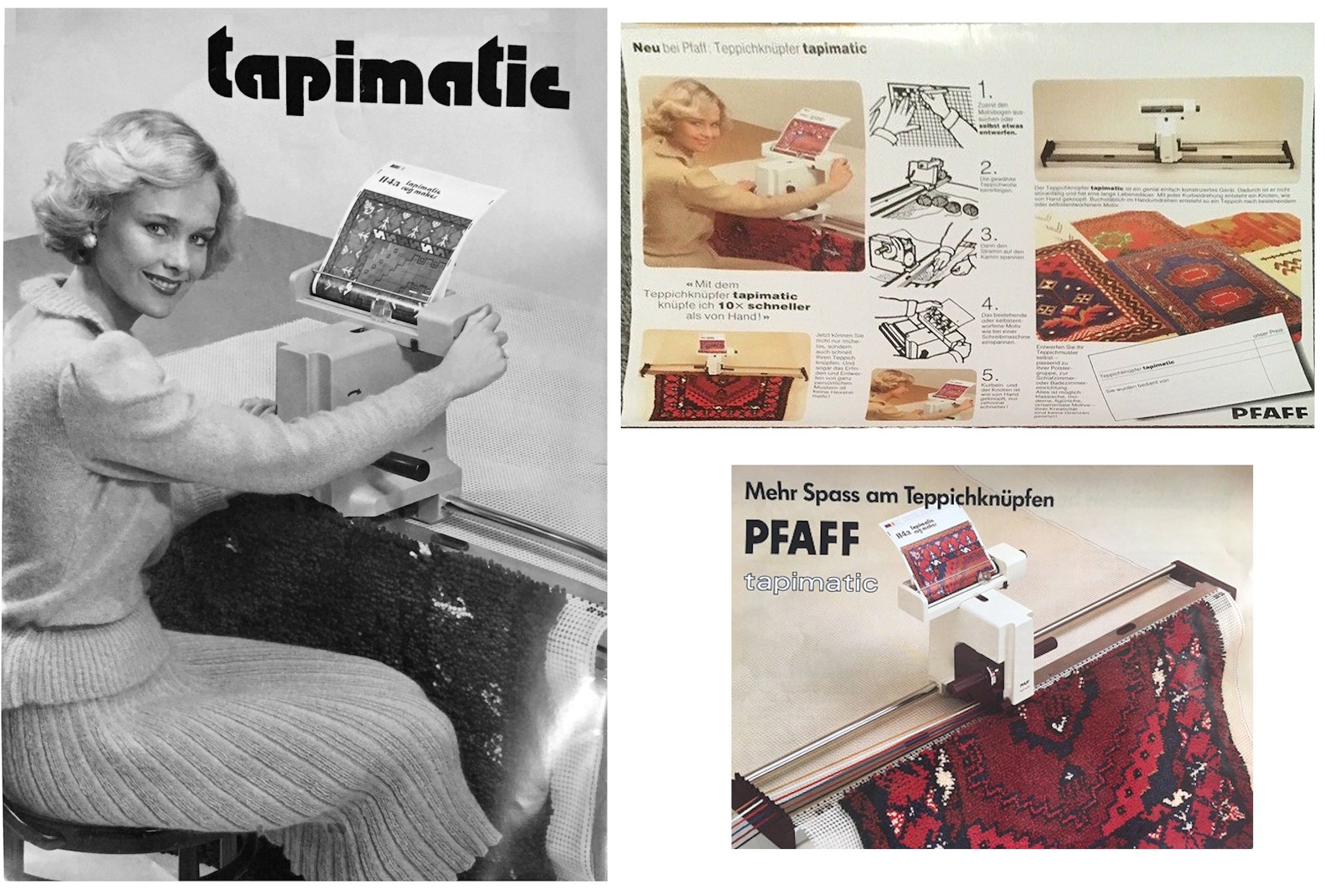
RUG-MAKING HISTORY - TAPIMATIC RUG-MAKING MACHINE
The Tapimatic was a table top carpet knotting machine from 1984 that used continuous yarn. It cut this into tufts as it knotted (the cutting mechanism looks similar to that on an Airlyne rugmaking machine). The machine produced a Smyrna Double knot ten times faster than by hand. It was threaded with several colours at a time and could switch from one colour to another. The backing was a double-mesh 3.3 hole canvas which is hard to find nowadays. Modern double mesh canvases, such as Zweigart, appear to be identical to the Tapimatic canvas, but are not always compatible with the machine and keeping it moving without jamming tended to make it rather clunky (probably due to its spacing mechanism not matching exactly with canvas spacing, or the canvas threads being a different thickness).

The machine came with pattern cards that were mounted on the machine and told the user when to switch from one colour to another. By winding the handle, the cogs moved the head along to the next square and the knotting mechanism placed and cut another knot.
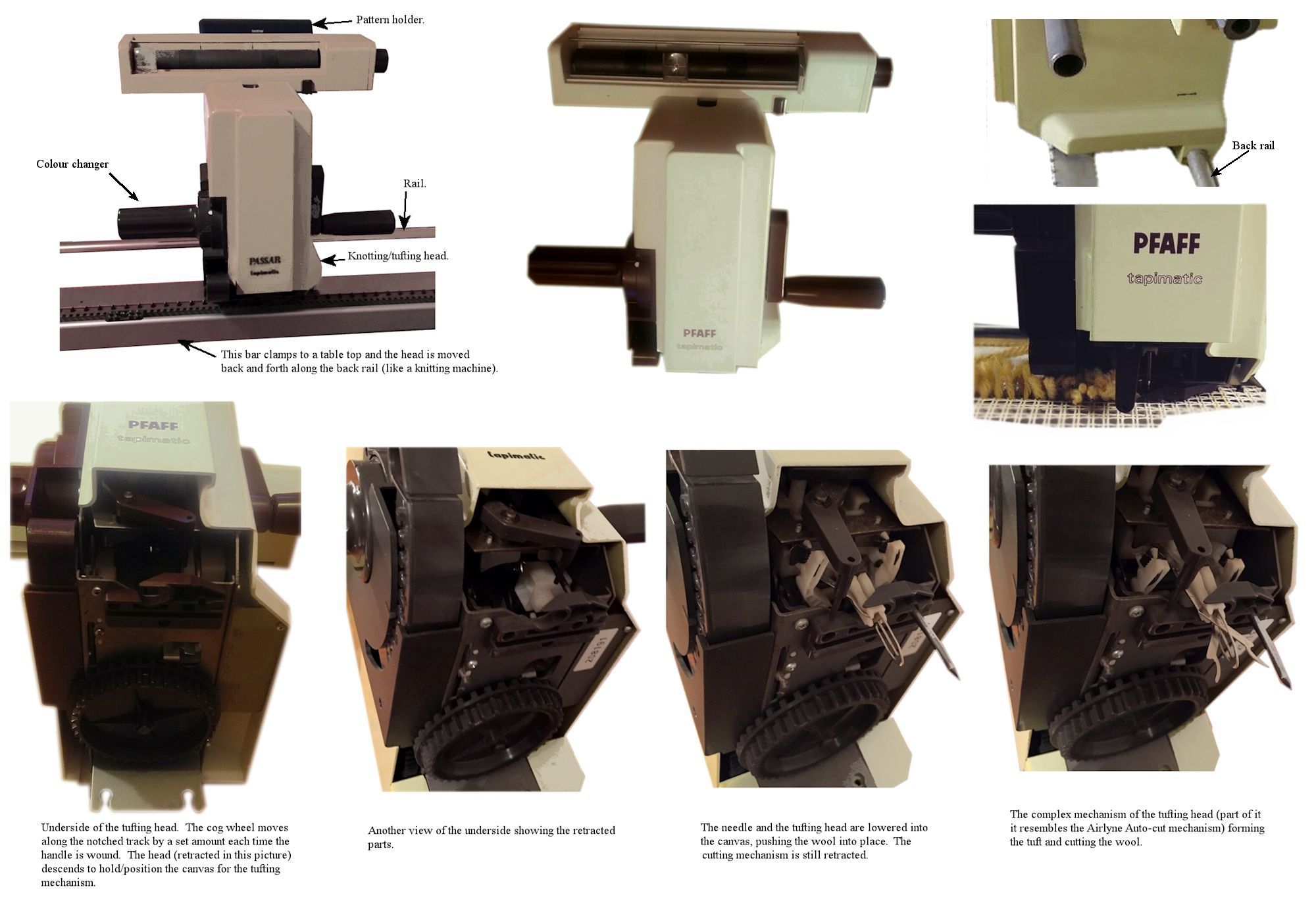
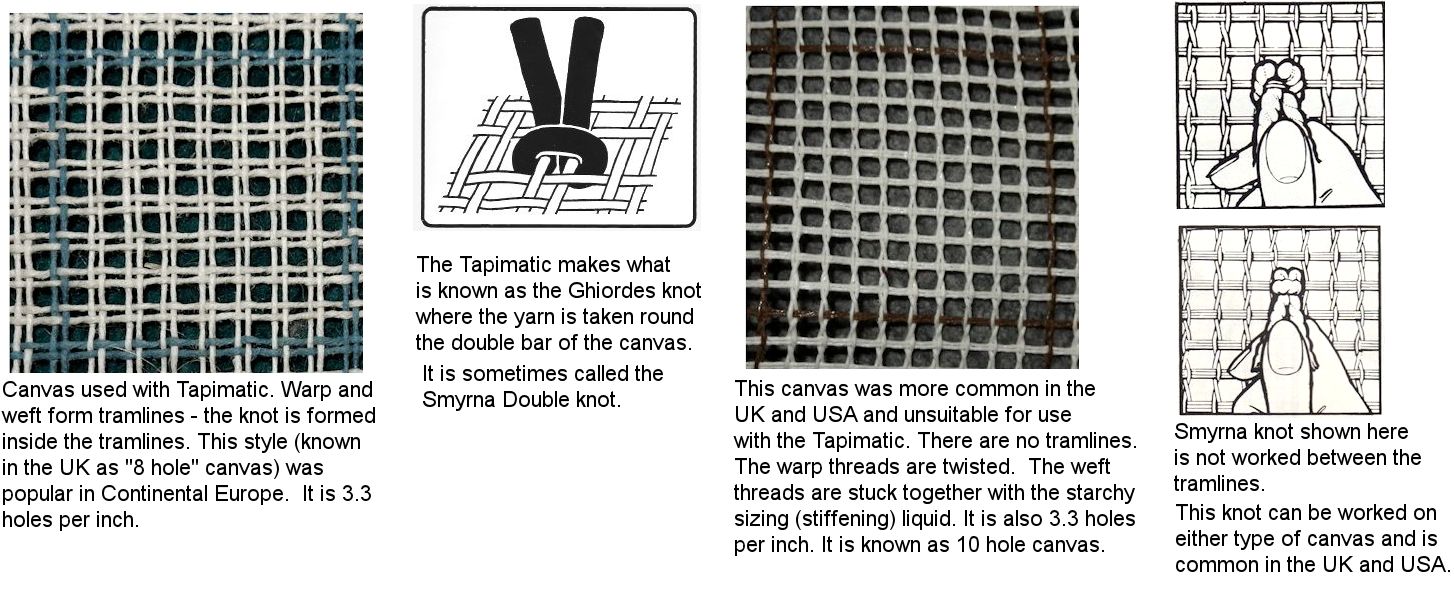
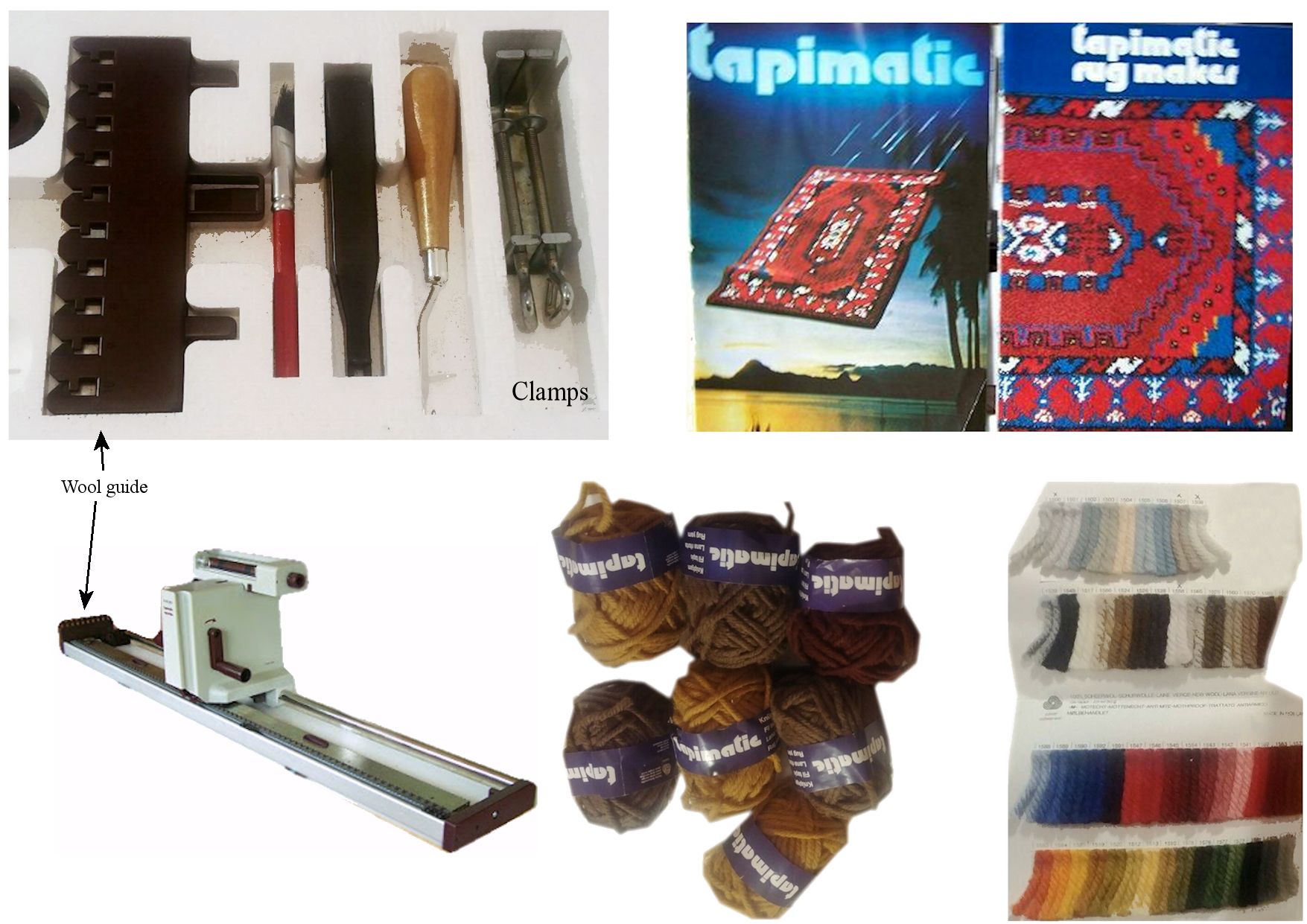
Tapimatic was made in Switzerland by Passap, who made knitting machines (“tapis” being French for rug). The Passap (PAtent Schnell Strick Aparat) knitting machine company was first founded in 1939 as the Luchsinger trading company in Dietikon, Switzerland. Some Passap products were badged as Singer or Pfaff. Tapimatics can sometimes be found online under any of those brand-names and described as carpet-making or rug-making machines, but there is very little information online about them. Adverts described them as a novelty.
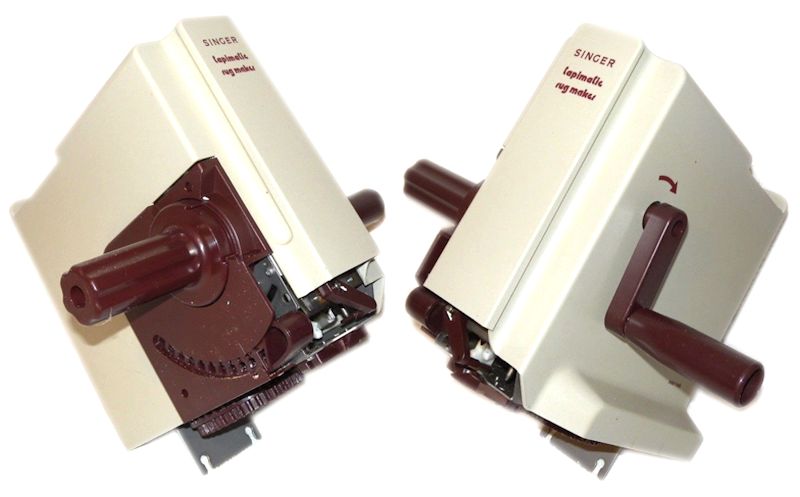
To my mind, the Tapimatic over-complicated a simple craft and had a number of drawbacks that limited its popularity.
TAPIMATIC: It used an older-style canvas where both warp and weft formed tramlines (popular in continental Europe where the knot is worked through the tramlines), rather than the more modern canvas with twisted warp threads and no tramlines (popular in the UK and USA where the knot is formed around the weft threads).
LATCH-HOOK: Latch-hooking could use either style of canvas and adapt the knotting style as desired by the user. User could use 3.3 hpi, 4 hpi or any other hole count.
TAPIMATIC: Many moving parts – more susceptible to jamming. Harder to rework a wrongly placed knot. Needed specialist repair if it broke down.
LATCH-HOOK: One moving part – a hinge. Did not jam. Easy to remove and rework wrongly placed knots. Cheap and easy to replace if a hook broke, different sizes and styles available.
TAPIMATIC: Table-top operation only (like a knitting machine). Could not be used “on the move.”
LATCH-HOOK: Table-top, lap-top or rug frame, could be done anywhere including confined spaces or while travelling.
TAPIMATIC: Used Tapimatic yarn. Needed an adaptor if using thinner yarn or multiple threads.
LATCH-HOOK: Used any type of yarn, pure wool, pure synthetic, cotton yarn, or any blend of fibres. It can be used with fabric strips or multiple threads. Could use pre-cut yarn or skeins. The only accessory required was a simple cutting gauge when using skeins – either a Patwin rotary cutter (easily available) or grooved wooden strip (easily available, or easily made, different pile lengths possible).
TAPIMATIC: Up to ten times faster than hand-working a double Smyrna knot (through tramlines).
LATCH-HOOK: Slower to work knots through tramlines, but fast to work Smyrna knot on canvas without tramlines. Where rugmaking is a hobby, speed is probably not the main concern.
